This 4K Ultra HD, 4-disc “Limited Edition” release from Arrow Video is currently available for purchase.
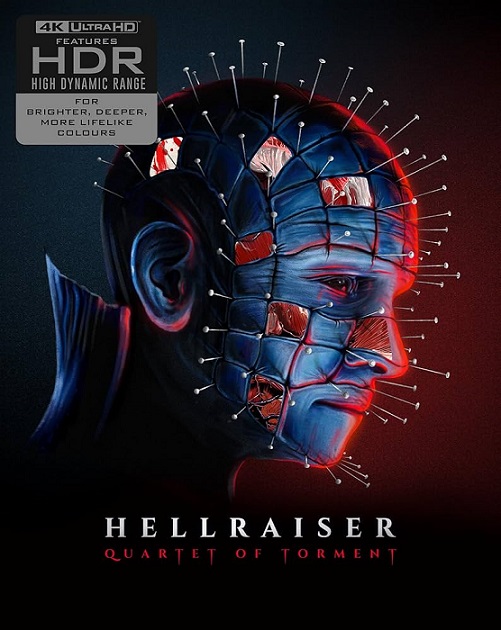
English horror/fantasy writer and artist Clive Barker drew attention from horror fans very quickly as a novelist when his work started being published. As a young reader of Fangoria magazine, positive reviews of his Books of Blood compilations even drew my attention. It wasn’t long before film producers started calling. Two of his works were adapted for the screen to generally disappointing results. Barker decided that he should take the helm of the next picture based on his stories and the result was Hellraiser (1987). Produced by low-budget New World Pictures, the film was better received and found a big following, thanks in part to a visually striking demon named Pinhead, who would immediately become an iconic horror figure.
As the years passed, the franchise passed around and numerous sequels were produced. After securing the rights to the first four films in the series, Arrow Video is now presenting the Hellraiser: Quartet of Torment set, which can be purchased either as a “Limited Edition” 4K Ultra HD or Blu-ray set. As always, the company has done their best to deliver the best possible versions of the movies, along with stellar extras. If you enjoy the series, then you’ll certainly be pleased with this release.
Hellraiser follows a man named Frank Cotton (Sean Chapman) who enjoys forbidden carnal pleasures. He purchases a strange puzzle box, hoping it will lead him to the ultimate in gratification. Instead, he is literally torn apart by demonic sadomasochists called Cenobites and their leader (Doug Bradley) who is informally known to series enthusiasts as “Pinhead”.
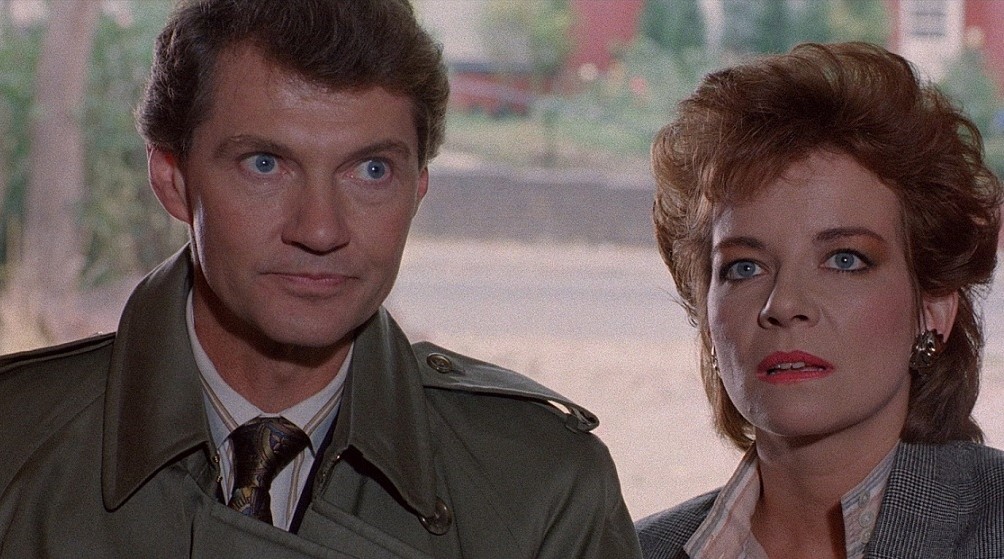
When Frank’s brother Larry (Andy Robinson) moves into the home of Frank (who has vanished) with wife Julia (Clare Higgins), she discovers and reanimates the deceased sibling. As it turns out, she and Frank once had an intimate relationship. He begs her to help him return to his full state so that they can be together again. Julia begins luring men into the home for Frank to devour and help regenerate his body. But her college-age niece Kirsty (Ashley Laurence) discovers their brutal plot. Kirsty ends up making a deal with the Cenobites in order to try and save herself from Frank and Julia.
This is a low-budget film (several sites report the budget as being $1 million dollars), but still manages to exceed expectations with the originality of its concept, some excellent performances, memorable make-up design, and plenty of nasty shocks. It’s a very assured feature debut and one that isn’t easy to forget. The movie still manages to shock and disturb all these years later. The committed cast and villainous turn by Julia from wallflower to deadly killer is wonderfully performed and fun to watch. Its themes were certainly more adult than most teen-centric films of the era and, of course, the Cenobites were something new and strange to behold. This is one of the most striking horror pictures of the decade and it’s easy to see how it quickly found a cult following.
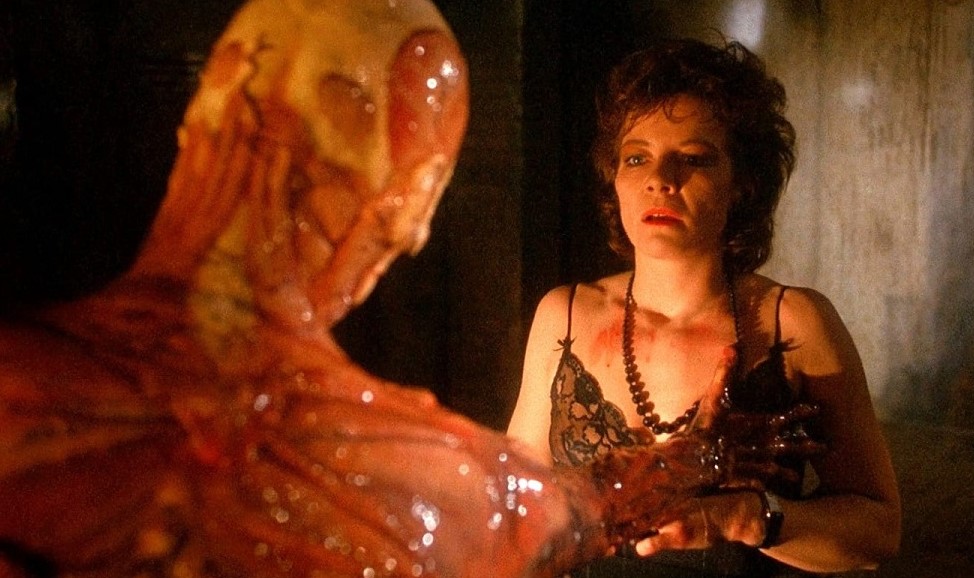
The 4K edition looks very strong and presents a sharper image than ever seen before. The transfers were taken from the original camera negative for all four titles. Of course, this is a low-budget feature and so there is natural film grain present, but this reviewer has never seen it look so good. The grisly details of the Cenobites and the graphic bits are very striking and will disturb/delight fans.
If you are familiar with the title, then you’ll know that the movie has been released on DVD and other formats before. It seems like most, if not all, of the extras from those editions are added. There is an archival commentary track with writer/director Clive Barker, and another with the filmmaker and star Ashley Laurence. They’re both informative tracks with first-hand details about the production. Of course, all of the promo and EPK material is included, including newly discovered and extended press kit interviews with participants. A talk about an abandoned score is also featured, as well as screenplay drafts and more.
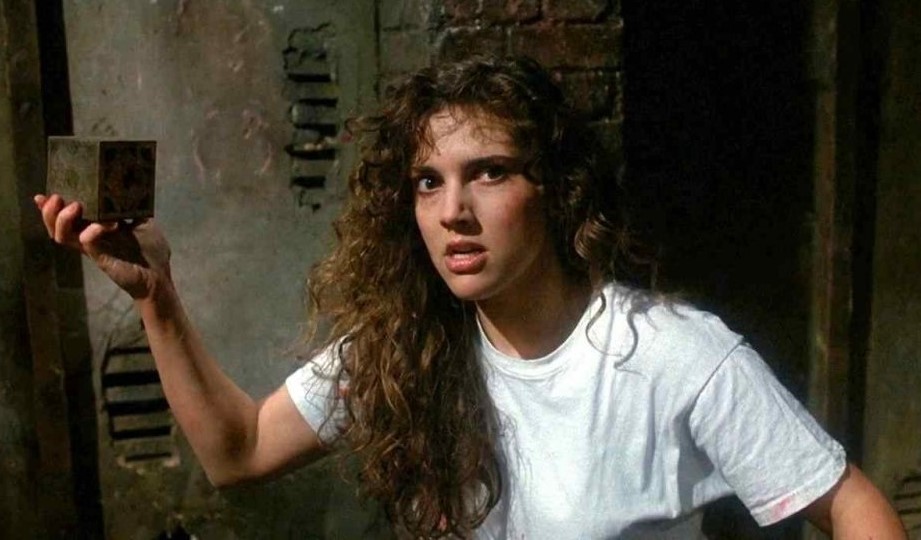
And yet, even with all the old material, the new bonuses are also fascinating. There’s a 60-minute discussion on Barker’s writing and movies from film scholars, another hour-long talk between authors Alexandra Benedict and Eric LaRocca about the writer’s work, the queer elements in the film and his general influence expanding boundaries in the genre, as well as a visual essay on body horror.
For me, the most enlightening bonus is a new commentary from film critic Kim Newman and Stephen Jones. The latter worked as unit publicity on the first three pictures and has great insight into the productions. They give an excellent overview and analysis of the movie, noting that the picture works particularly well because of its unique perspective and that many of the characters in the stories are adults. Jones talks about how he came onboard, offering his publicity services for free. He was accepted because they otherwise couldn’t afford a publicist on the movie. Jones talks about his experiences on-set and just how friendly everyone was.
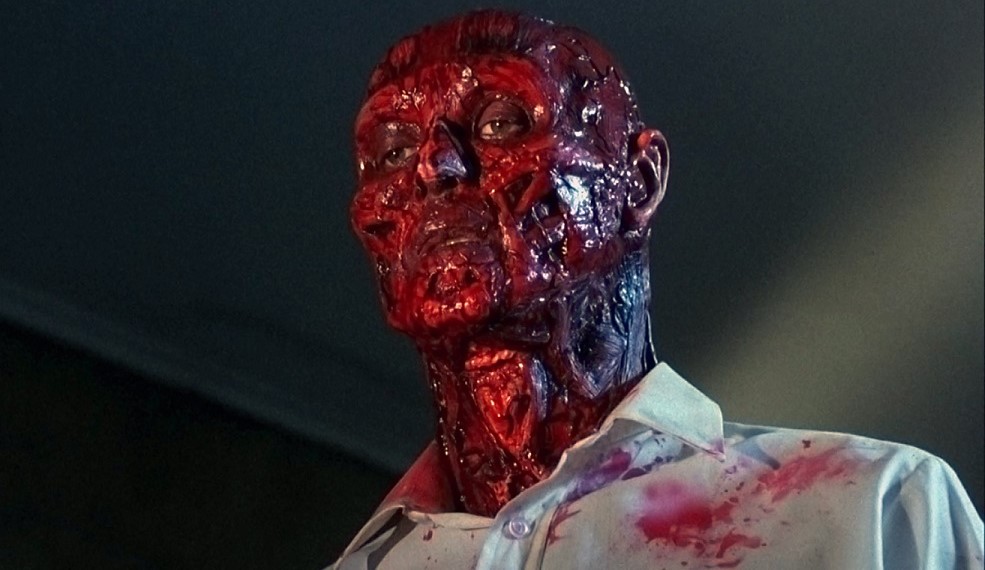
The pair also note the work of seasoned crew that helped make the film look more lavish and expensive than it was. A lot of it was shot in a real house and there were challenges in trying to create interesting shots on location. There are great stories about New World Pictures as well, who insisted that the setting of the picture not be London. Barker and the team were forced to try and remove any references to the city (it doesn’t work, as there are many elements that give it away). Additionally, the producers insisted on an ending that allowed for another sequel, which Barker added on.
Even more interestingly, New World were so impressed with the finished product that they greenlit a follow-up before the movie was even released. Perhaps that was why it was only one year later that Hellbound: Hellraiser II (1988) was completed and arrived in cinemas. While Barker offered input on the follow-up, screenwriter Peter Atkins was brought in to write the screenplay and the first film’s production supervisor, American Tony Randel, flew out to the UK to direct.
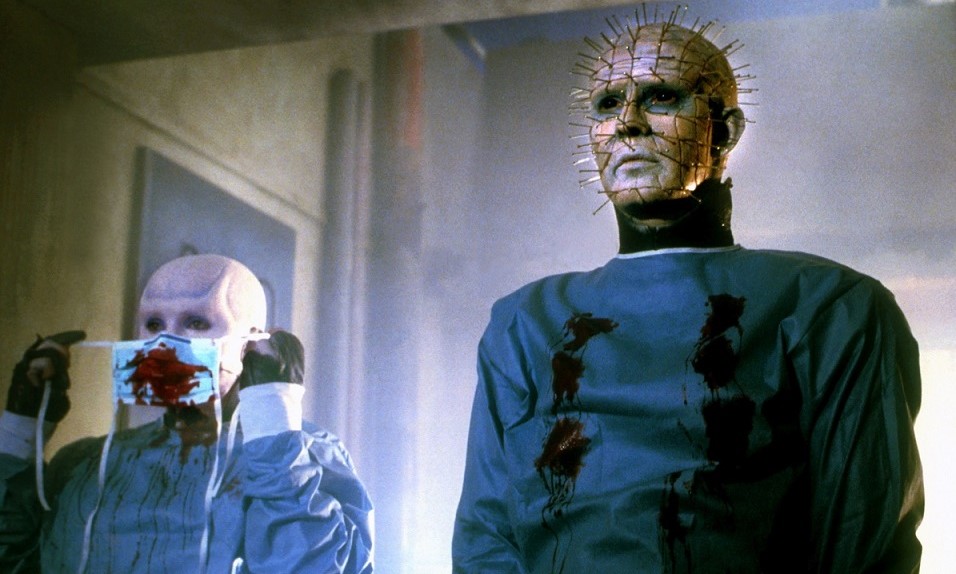
This story is set immediately after the first, with Kirsty (Ashley Laurence) being institutionalized after the events of the first film. Of course, no one believes her story about Pinhead (Doug Bradley) and the Cenobites or the possibility of demons appearing from Hell. One of her caregivers, the sociopathic Dr. Phillip Channard (Kenneth Cranham) is fascinated by what he hears and ultimately raises Julia (Clare Higgins) from the dead. He suddenly becomes enraptured by the skinless woman and is soon luring victims into his home for her to feast on and regenerate. Kirsty also receives a message from someone claiming to be her deceased dad asking her to rescue him from Hell. Everyone is soon drawn into this terrifying world.
While not as powerful as the original, this is an effective follow-up that expands the mythology of the series and delivers the nasty goods. Julia becomes a femme fatale in this picture and seems to be relishing her role, while Channard makes an impression, especially after his own transformation into a Cenobite. Unlike other victims, he really enjoys the transformation. We also learn more about Pinhead and his history. There are some murders that are even messier and more disturbing than the original and the film does manage to present more unique and strikingly horrible imagery in its new setting.
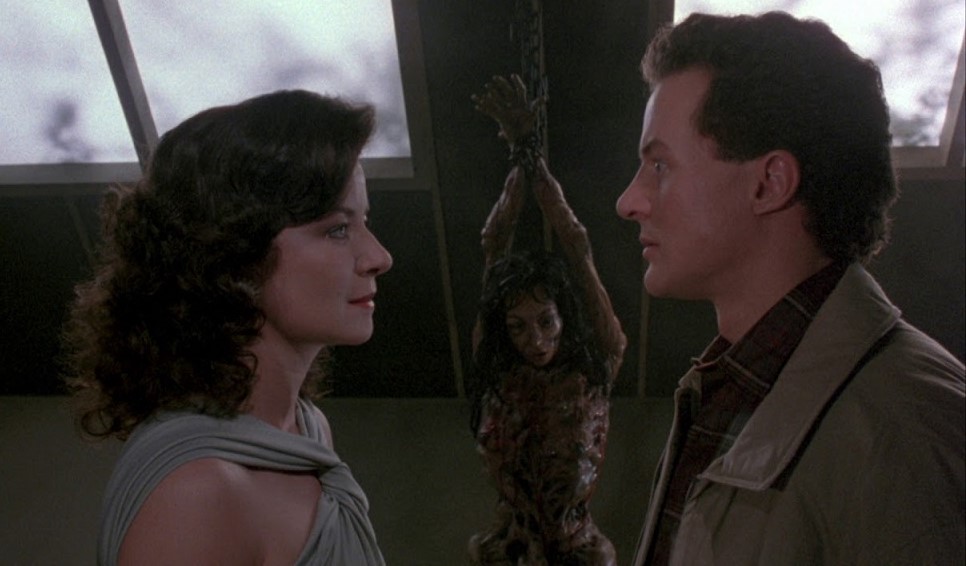
Like Hellraiser, the 4K presentation of Hellbound: Hellraiser II is excellent overall. It’s particularly slimy and bloody, and those scenes are even more sickening than ever now that the image quality has been improved. I recall the movie being cut to receive an R-rating in North America, and this looks like the complete, unrated edition that arrived on VHS after its cinema release. The crew and cinematographer on the picture are the same, meaning that the visuals, which are a little more elaborate this time out, look similarly impressive as the previous title.
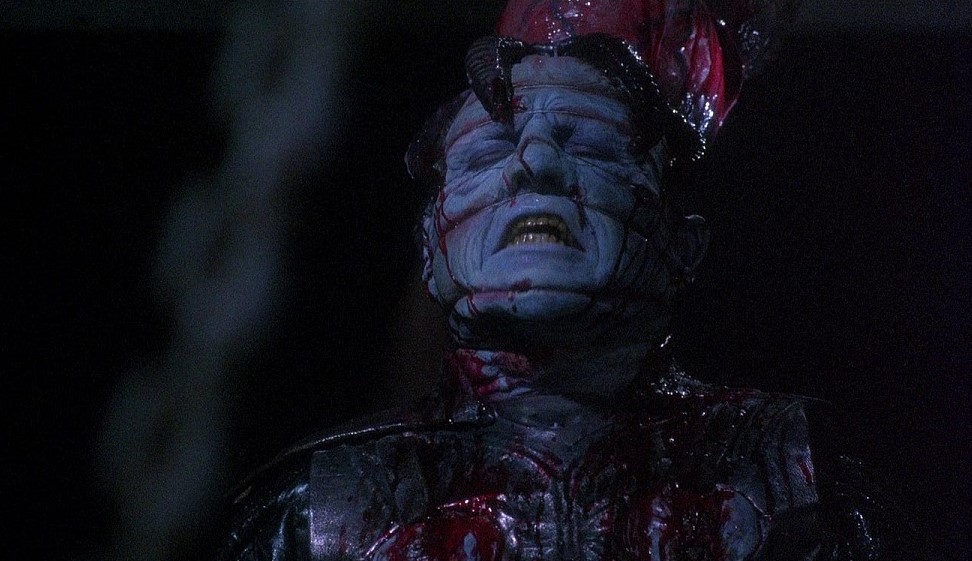
Like the previous title, this disc contains an archival director commentary with Tony Randel and writer Peter Atkins, archival on-set interviews with Clive Barker, the cast and crew (including Doug Bradley and Sean Chapman, and the make-up effects team, behind-the-scenes footage and promo materials.
There’s a new 80-minute appreciation of the movie which contains authors George Daniel Lea and Kit Power talking about Barker and this sequel. They note how well it holds up and all the interesting new additions and ideas contained in the story. They also note that the story is unpredictable and takes many unexpected turns, a quality they admire.
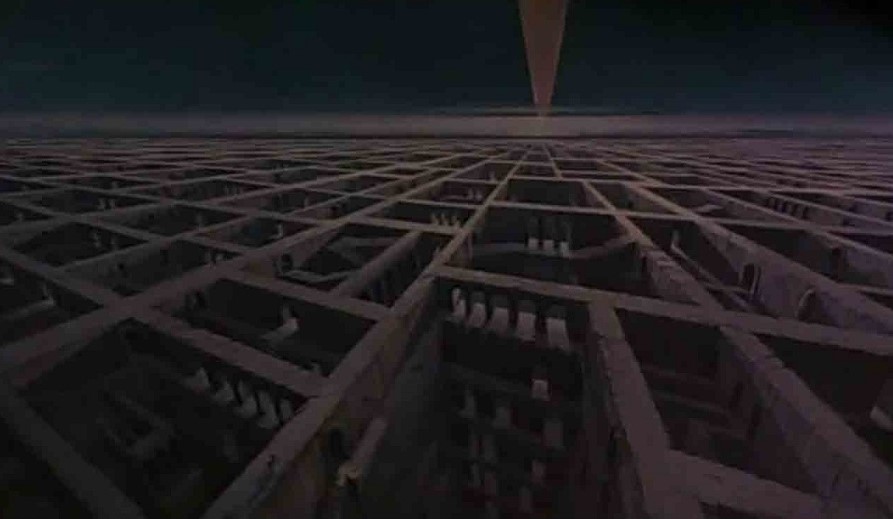
Additionally, there is another entertaining commentary from unit publicist Stephen Jones and Kim Newman. They also are shocked by just how nasty this picture is (if my memory serves, it is because there are a few minutes of gruesomeness added from the original theatrical release) and share memories of the production. They also note that at this point in the series, Julia was the main villain. Of course, everything changed when Hellraiser was released, featuring Pinhead on the poster. The attention of the public soon became focused on the Cenobites and future titles would primarily focus on Pinhead as the antagonist. There are plenty of fascinating, revealing notes and stories that were new to this reviewer.
Despite the financial success of the first two movies, New World Pictures would ultimately go bankrupt and the rights to the Hellraiser franchise would land in different hands. Hellraiser III: Hell on Earth (1992) came from a different production house. It moved the setting to New York City and, as everyone involved notes, the film became more of an American take on the series. For the first time, the crew was largely different this time around, and so the look and feel of the movie is decidedly different. Still, the second film’s screenwriter Peter Atkins was one individual who did return to write the screenplay for this picture.
After the events of the second chapter, Pinhead has split into two separate entities, one good and the other the familiar monster. Self-centered, womanizing nightclub owner J. P. Monroe (Kevin Bernhardt) discovers a “Pillar of Souls” statue seen at the climax of the second title and decides to purchase it. The artwork contains the puzzle box, which is soon removed and causes havoc at the club. Pinhead (Doug Bradley) reveals himself to Monroe. Eventually, the Cenobite is freed and literally the dancehall apart, creating new Cenobites in the process. Reporter Joanne Summerskill (Terry Farrell) and clubgoer Terri (Paula Marshall) try to survive the ordeal.
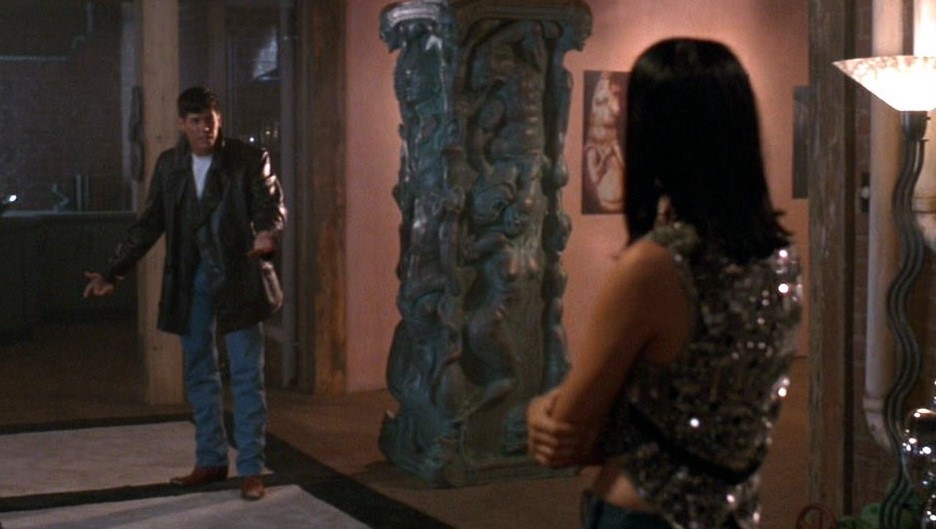
This is a bit of a step-down from the previous entry, but it does have a few fun moments as Pinhead and his new Cenobites go on the rampage in and outside of the club. A few elements are dated, like a DJ monster who fires CDs at victims, and another who uses a video camera to brutal effect, but they do make an impression. The new female Cenobite does make a more lasting impression and there’s an effective scene involving Pinhead entering a church and acting in a blasphemous manner. The main villain gets more screen time here and does have some great lines (thanks to the screenwriter, who was familiar with the character). It also features an effective ending with plenty of striking and darkly amusing imagery.
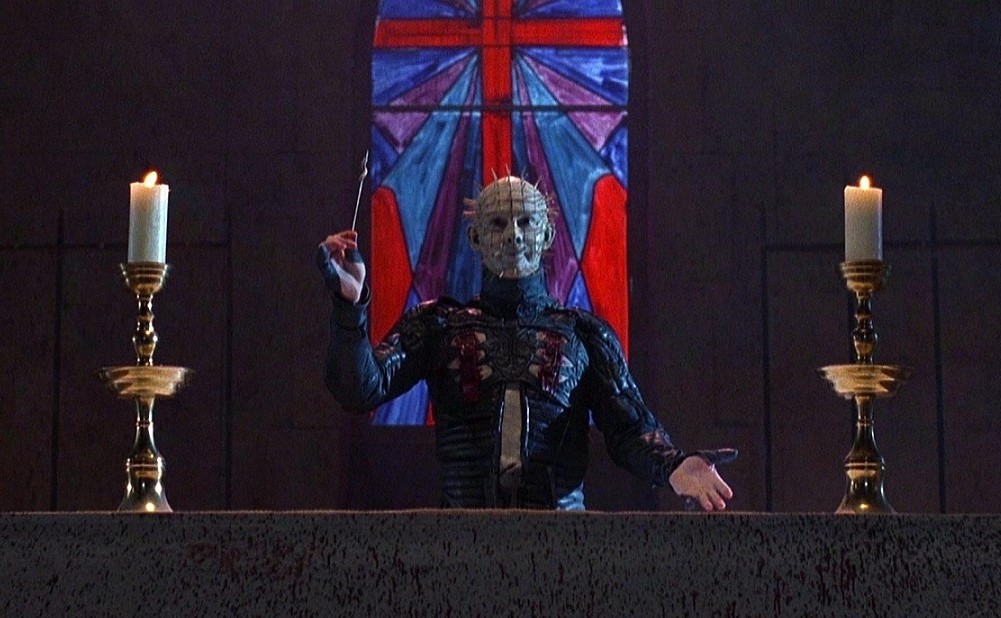
The film is included in both its theatrical and unrated editions. Since the unrated cut was only available on VHS, the extra footage, presented in standard formatting (1.33:1), is cut into the cleaner R-rated version (1.85:1). To be honest, there isn’t a lot of bonus footage of note. It’s mostly longer establishing shots, a few extended conversations and some extra footage of dead bodies lying in the club. While interesting to see, one can understand why the material was excised and I almost feel like the R-rated version is better.
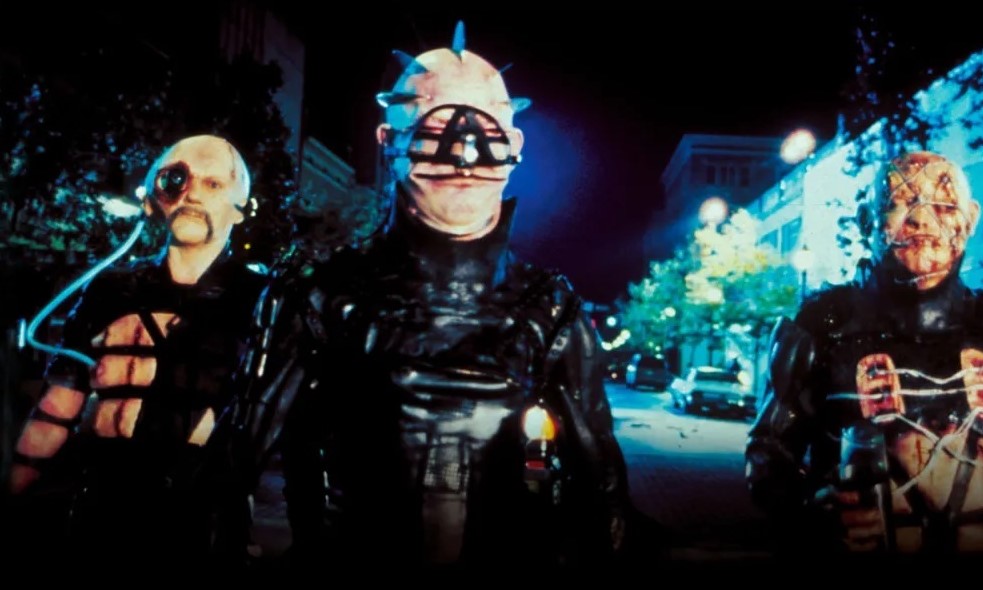
Image-wise, the picture is grainier than the first two. This isn’t the fault of the transfer though, rather the source material. The lighting isn’t quite as strong and it looks like there was a bit of brightening up in the lab with a few shots during production, leaving more grain on the print. At least there are some clean shots involving Morgan’s bedroom, the neon-tinged club and during the explosive final conflict.
The bonus material on this disc is fascinating. Again, you’ll get an archived Peter Atkins commentary, as well as one with director Anthony Hickox (Waxwork) with Doug Bradley. There are also EPK cast and crew interviews, previously unseen extended press interviews with Clive Barker and Doug Bradley as well as a trailer, press photos and more. Once again, the highlight is the new commentary from unit publicist Stephen Jones and Kim Newman. There is a lot of background detail about the new US rights owners and the involvement of Dimension Pictures (the Weinstein brothers), who would eventually take control of the series.

Perhaps the funniest story is that Clive Barker was initially paid by producers to have his credit removed from the film and not have input on the picture. After the rough assembly, they changed their minds and paid his fee a second time in order to receive comments on how to improve the movie (apparently, the memorable finale moments were one of his suggestions). Barker’s name was also reinserted into the credits. The pair discuss some of the strangeness occurring behind-the-scenes and the stories are very interesting.
Hellraiser: Bloodline (1996) was the last movie in the series to get a theatrical release and was made and distributed through Dimension. It was something of a disaster and is largely regarded as a weak entry in the franchise. In fact, the pseudonym Alan Smithee is used as director credit. The story jumps around through three timelines and involves the origins of the puzzle box, made by a toymaker in France. After characters use it to open a gateway to Hell, we see a descendant living in the modern age dealing with the Cenobites, and a final battle between another family member set on a space station. While it was all intended as a linear anthology, but after poor test screenings, the Weinsteins took control of the film and recut it. The movie actually now starts in space and jumps back and forth between the segments.
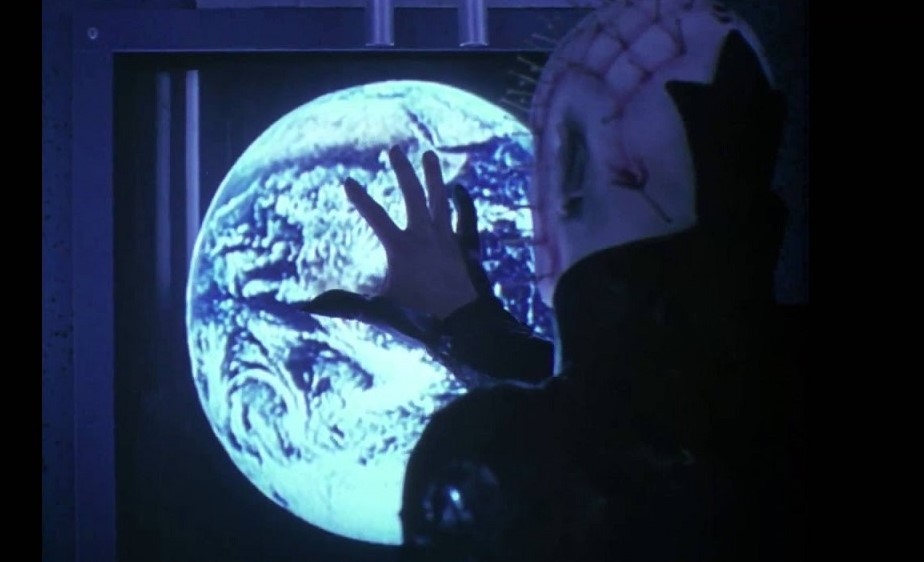
It’s a mess, but an intriguing one. Adam Scott has a small role in the period segment as a Frenchman, which is amusing to see. Once again, Pinhead has some great lines and there are a few wince-inducing moments involving impalements and other horrors. But the segments don’t feel unified. The cross-cutting sometimes kills momentum within the individual stories and the picture simply looks cheaply thrown together. Apparently, due to firings and reshoots, there was a revolving door of crew and there are issues with the photography. From my eyes, this includes shots that are too dark, as well as images of Pinhead in which his face is lit but you can’t really see his eyes. The entire film is quite grainy as well. This has the worst picture quality in the set. It is not because of the transfer, but because of the photography itself.
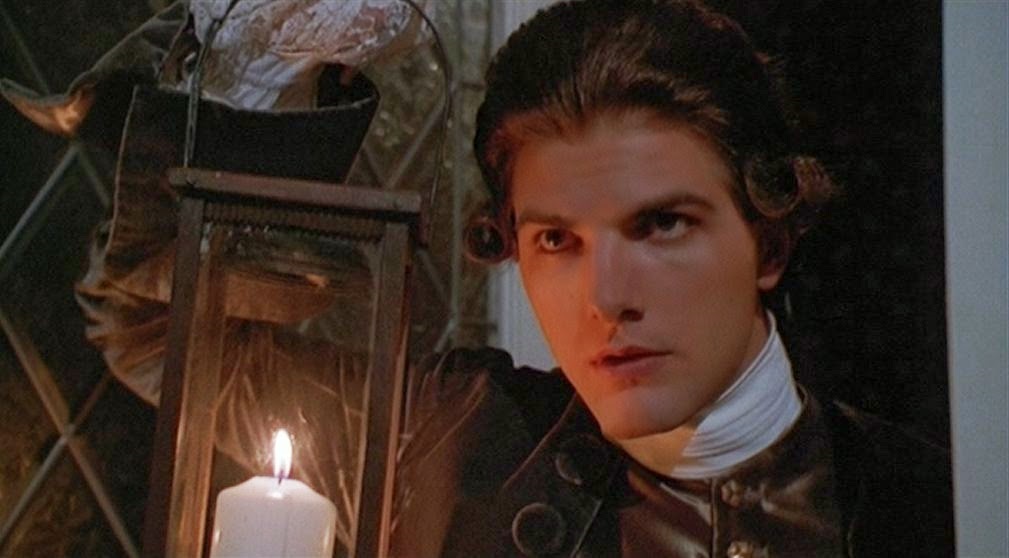
As with other titles, there are preexisting bonuses included, like a commentary with various figures about the importance of the Hellraiser franchise. There is an archival analysis of Barker’s written work and tons of publicity material. The new material includes the Cenobites and their connection to goth, fetish cultures and BDSM.
But one of the most impressive new additions is the new audio commentary with Kim Newman, Stephen Jones and screenwriter Pete Atkins. Atkns hates what occurred during production and tells many of the details about what went wrong. He and Barker discussed creating an anthology that could wrap the series up. After completing the script and sending it to Miramax, they complained about the costs involved. These were issues behind-the-scenes with money and the budget was slashed (he says almost in half) days before production.
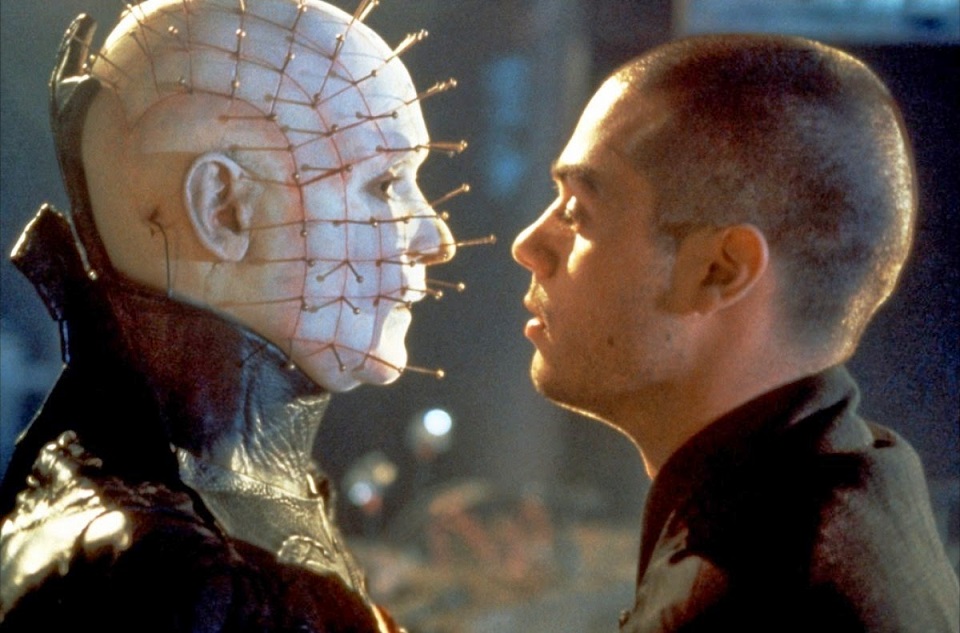
Atkins notes that he was befriended by the Weinsteins initially, but when the first test screenings showed that the crowds wanted Pinhead to appear earlier, he became nasty and angry at them. The original director, make-up effects man Kevin Yagher was also treated poorly by the Weinsteins and eventually exited the project. Despite cutting the budget before production, the Weinsteins then spent money on reshoots with director Joe Chappelle (it’s always funny how some movie executives want to cut costs, but ultimately end up not only having the cash, but spending more towards the end of production).
The Weinsteins then re-edited the movie from a linear format and crosscut between segments, starting with an action scene on a spaceship. It’s all stunning to listen to. Jones states that he thinks the film holds up better than remembered, but clearly Atkins and others involved aren’t as certain.
Amazingly, Jones himself was given a VHS tape with an early re-edit after Yagher left the project. That has also been included as an extra. Naturally it doesn’t look great, but one can see plenty of difference between this and the final cut and it’s a really interesting feature. Personally, I think a linear narrative was the right way to go. Throwing spaceships and the puzzle box around in the first few minutes is a stretch and, for those expecting horror, feels silly from the get-go. If the movie had progressed in a normal timeline, it would have been an easier transition into science-fiction, but the jumping around is jarring and also leaves viewers disconnected from the characters and story.
From this point forward, all of the Hellraiser sequels from Miramax became direct-to-video features (the recent 2022 Hulu reboot came from the new franchise owners). For those curious about the series, the 4K Hellraiser: Quartet of Torment set delivers the best presentation of the first four titles. And, of course, those with a Blu-ray player will find that that version also provides much improved picture quality). The first two movies in particular look really strong, and it’s interesting to see the various filmmakers try to adapt and continue the series. This disc contains wonderful bonuses and new, informative extras that explain what was going on behind the scenes and what ultimately occurred behind-the-scenes. It’s a great set that is highly recommended.


